Olympics’ new big air snowboarding takes sports to a new extreme. Even the athletes are scared
- Share via
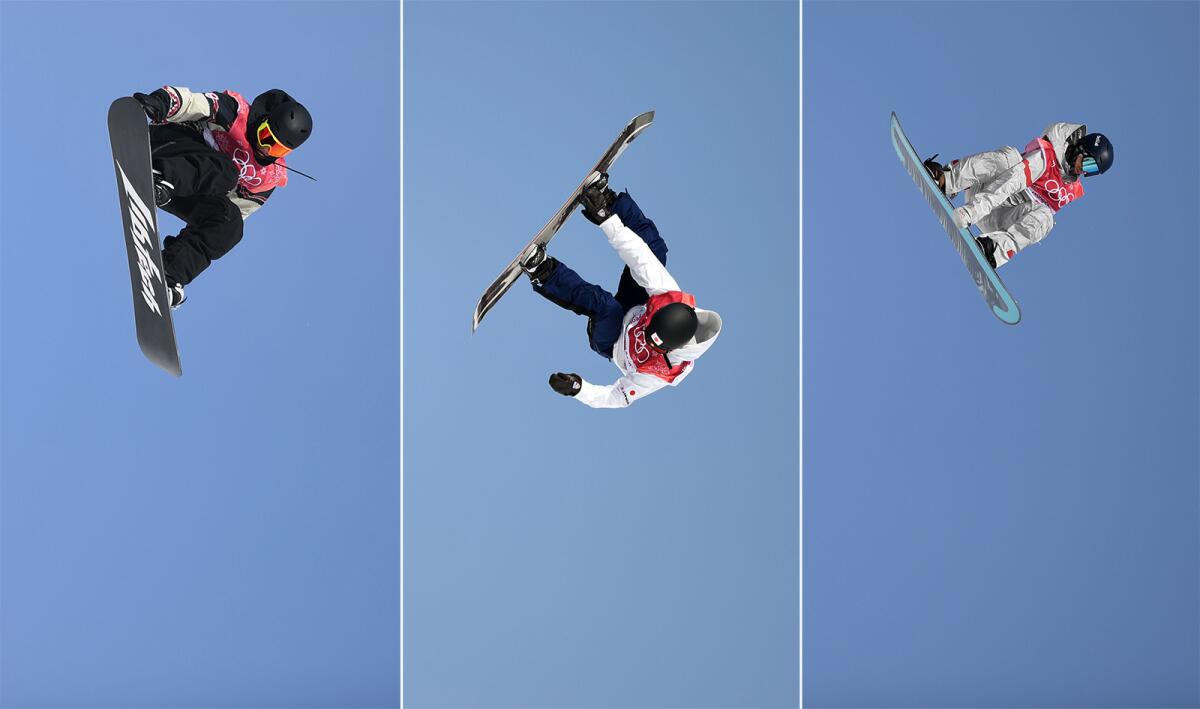

Even the best snowboarders in the world know the event they call “big air” isn’t normal.
They know it doesn’t make sense to fly down a ramp and launch themselves off a steep jump, spinning and twisting through the air, coming down with a thud on hard-packed snow.
That’s where fear comes into play.
With big air snowboarding making its Olympic debut at the 2018 Winter Games in Pyeongchang, the riders vying for gold this week can make what they do look graceful and, at times, utterly natural.
Don’t be fooled — they are scared.
“Every time I get up there and I know I have to go upside down three times, my heart’s always racing,” says American Chris Corning, a silver-medalist at last year’s world championships. “It’s terrifying to go upside down that many times.”
Risk isn’t exactly alien to the Winter Games.
Skiers race down mountainsides at freeway speeds and bobsledders hurtle through icy, twisting turns. It shouldn’t be a surprise that four athletes have been killed in the Winter Olympics since the mid-1960s.
Adding extreme sports such as snowboard cross and freestyle aerials to the program in recent years has only increased the potential for serious knee, shoulder and head injuries.

Big air represents extreme sports taken to the extreme. Think ski jumping combined with halfpipe.
The Pyeongchang venue features a towering 160-foot-tall ramp with a 16-foot jump at the bottom. The layout isn’t as radical as others have been, but still allows riders to vault themselves skyward with enough speed and amplitude to attempt four or more rotations.
It’s like a cat falling off a balcony, says Marusa Bradac, a UC Davis physics professor who studies sports such as snowboarding, skiing and surfing. Riders must manipulate their arms and legs to control their bodies in flight, performing a variety of tricks they hope will impress the judges. They must also get their feet back underneath them at the end.
“If you land badly,” she says, “you’re in big trouble.”
That’s the most-worrisome part — landing upright — but anxiety can strike well before then.
The Pyeongchang ramp, one of the world’s tallest, is not built into the side of a hill but instead on scaffolding that rises high above ground-level. This common set-up bothers Jamie Anderson, who competed in the women’s final on Thursday.
“You’re going up in this sketchy elevator,” the American snowboarder says. “You’re like 100 feet up and nothing about it feels natural.”

Standing at the top can be simultaneously exhilarating and chilling. Different riders have different ways of dealing with this moment of truth.
Some think back on all their practice runs, all the times they successfully landed the trick they are about to attempt. Others attempt to calm themselves by breathing deeply.
Trying to ignore the alarm bells in your head can be futile, says Alex Cohen, a sports psychologist for the U.S. Olympic Committee. The trick is converting this distraction into an advantage by using fear to sharpen your thoughts.
“There is a lot of really great research on how it not only gets your attention, frequently athletes seek it out to feel most alive, most engaged,” Cohen says.
But “mindfulness,” as experts call it, goes only so far. At some point, Corning says, “there’s not a whole lot to do other than pump yourself up, clap your hands and go for it.”
The trip down the ramp takes about five or six seconds, just long enough to gather speeds of up to 40 mph for a good “pop” off the jump.
Knees flex and hips twist. The skittering sound of the board is replaced by a quiet rush of air as the rider takes flight.
“They come off the jump in such a way that they have some angular momentum,” said Michael O’Shea, a Kansas State University professor who teaches about the physics of sport. “They can use their positioning, tucking their body to speed up the rotation.”
Three full rotations used to be enough for a winning score, but now top contenders figure they need at least four, while also flipping head over heels. Their mid-air acrobatics come with technical-sounding names such as the frontside double cork 1440 and the switch backside triple cork 1620.
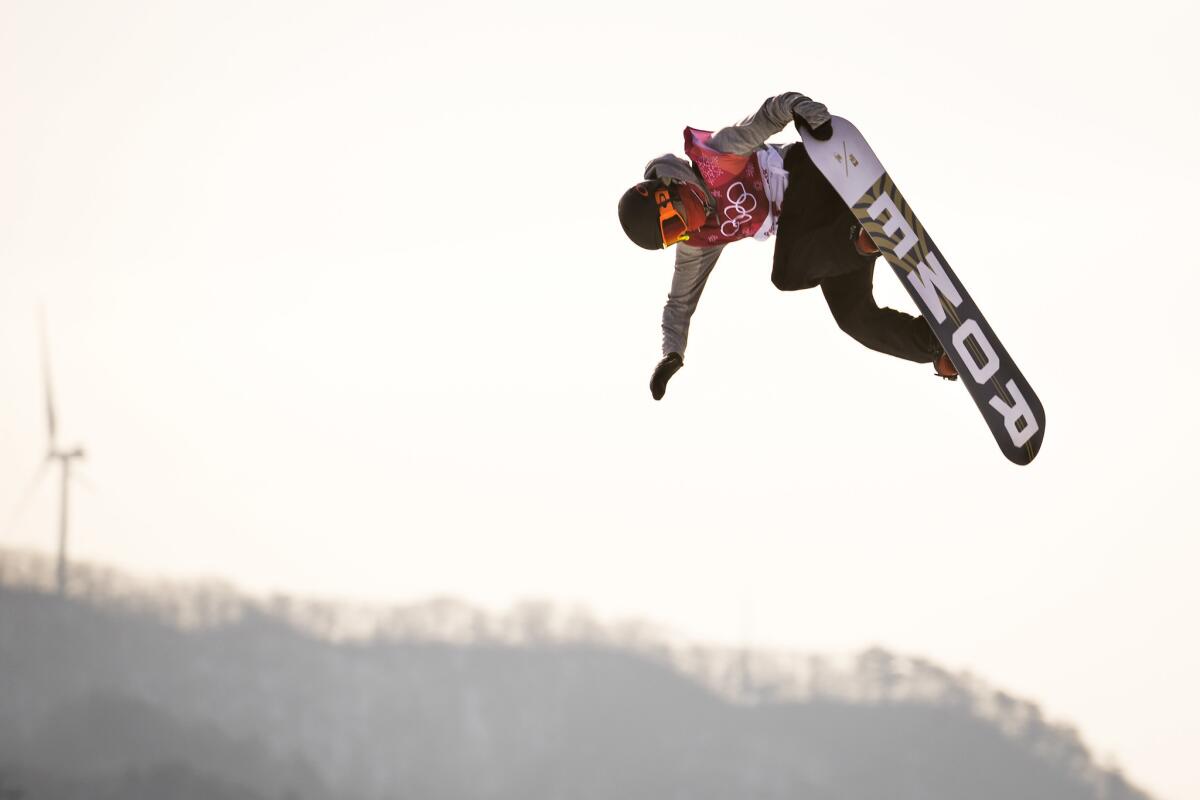
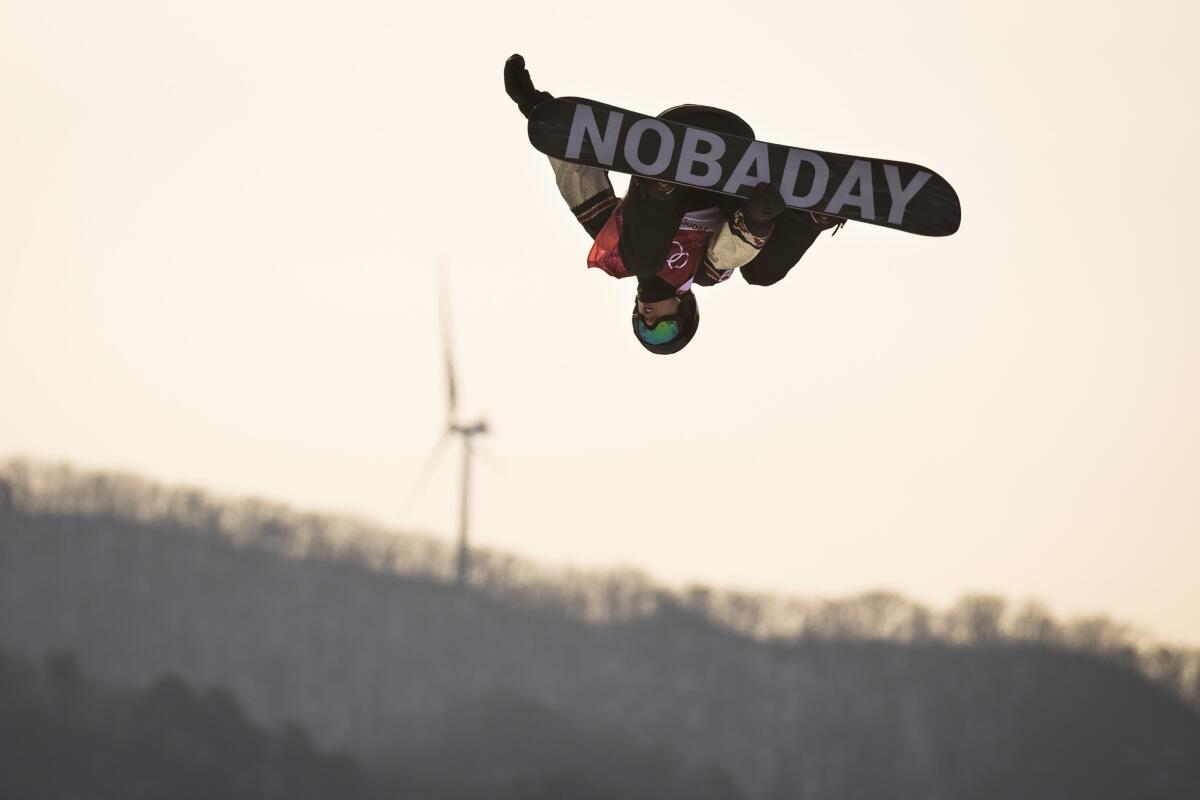
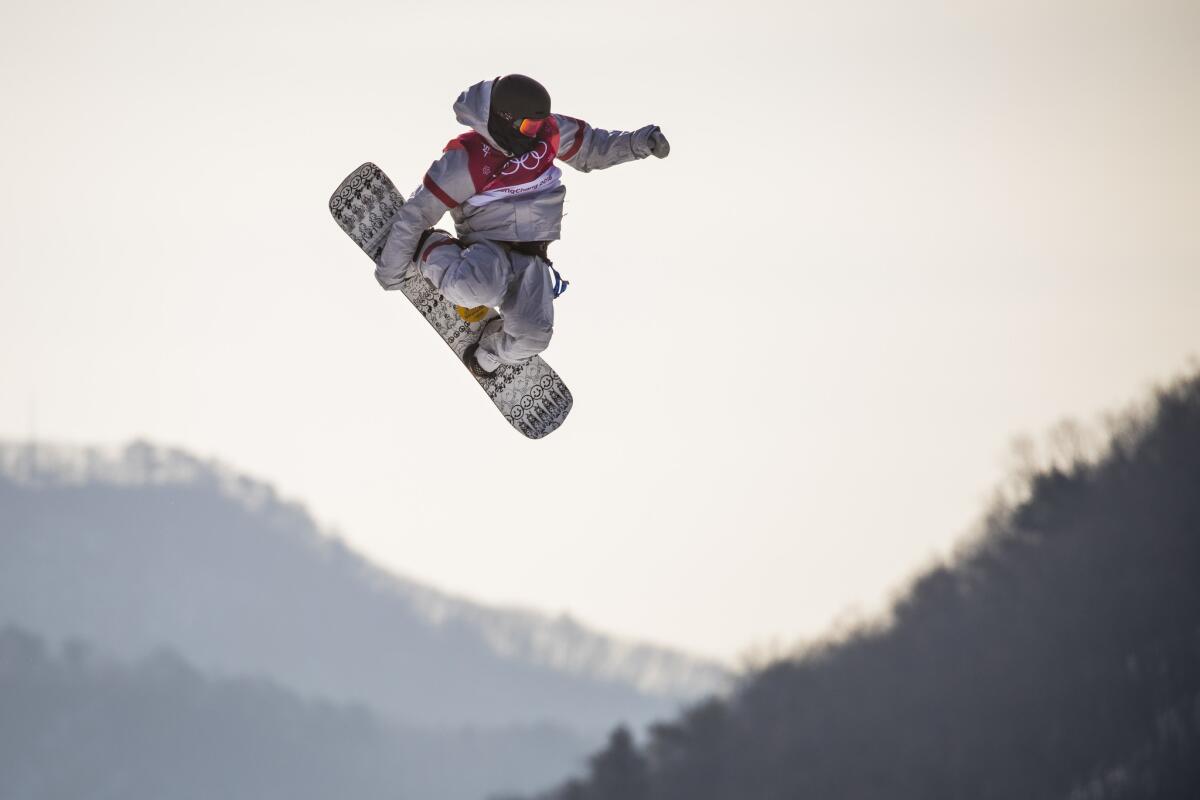
There has been talk of the sport progressing too quickly, rivals taking unreasonable risks to outdo each other. Veteran snowboarders such as 31-year-old Yuka Fujimori of Japan look at the new generation with a degree of wonder.
“I feel young riders have no fear,” she says.
But as one of the sport’s innovators, 23-year-old Max Parrot of Canada insists no one in big air is immune to doubt. A little trepidation, he says, “makes you not go too crazy.”
The funny thing is, some riders say that — except for the occasional “Oh no” moment — they often stop worrying once they get airborne because things happen so fast.
Which can be a blessing and a curse.
“The surface is coming at you rapidly,” O’Shea says. “You need to have split-second timing, maybe one-tenth of a second.”
If the landing area were flat, all of the energy stored in the jump would be absorbed by the body, which the professor believes would be “deadly.” Instead, big air riders land on a downward slope — like ski jumpers — so their energy can be converted into forward motion.
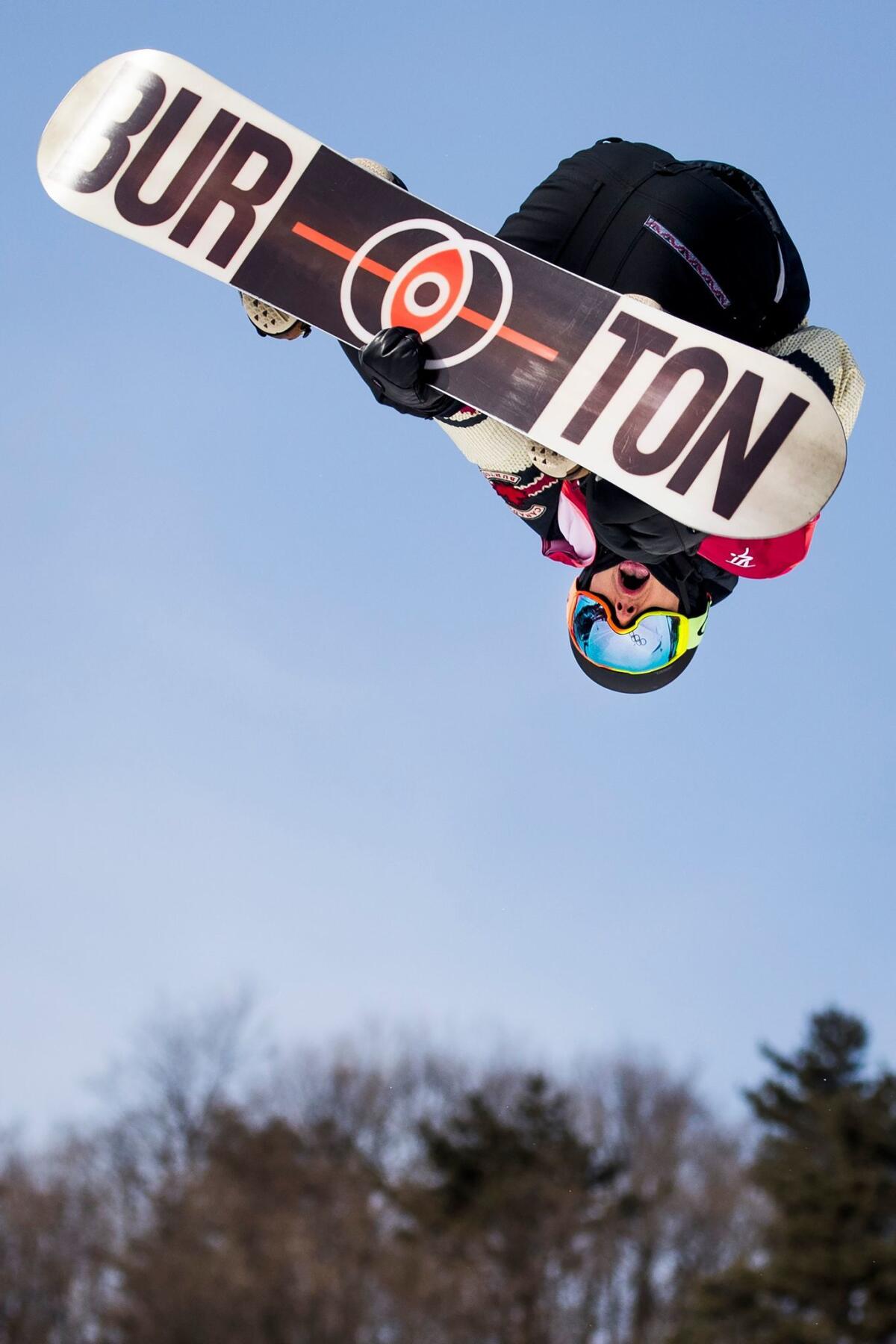
Still, injuries are common. Mark McMorris of Canada is competing in Pyeongchang after recovering from numerous bad falls, including a hard landing at a 2016 event that broke his leg.
"I'm just like really thankful to be here and get a shot,” he says.
With a field of 12 battling to win the sport’s first Olympic championship, the men’s final on Saturday could turn into a game of chicken.
During the qualifying round on Wednesday, riders pulled out some of their best moves to ensure they advanced. There has been talk of needing something more to earn gold.
“I’m going to expect some very high-level and very crazy tricks,” Corning says.
The American recalls reading a scientific article that predicted big air riders had yet to reach their full potential and might someday attempt six rotations.
The thought put a chill through him.
“I don’t know if we’ll ever get there,” he says with a smile. “I certainly hope not.”
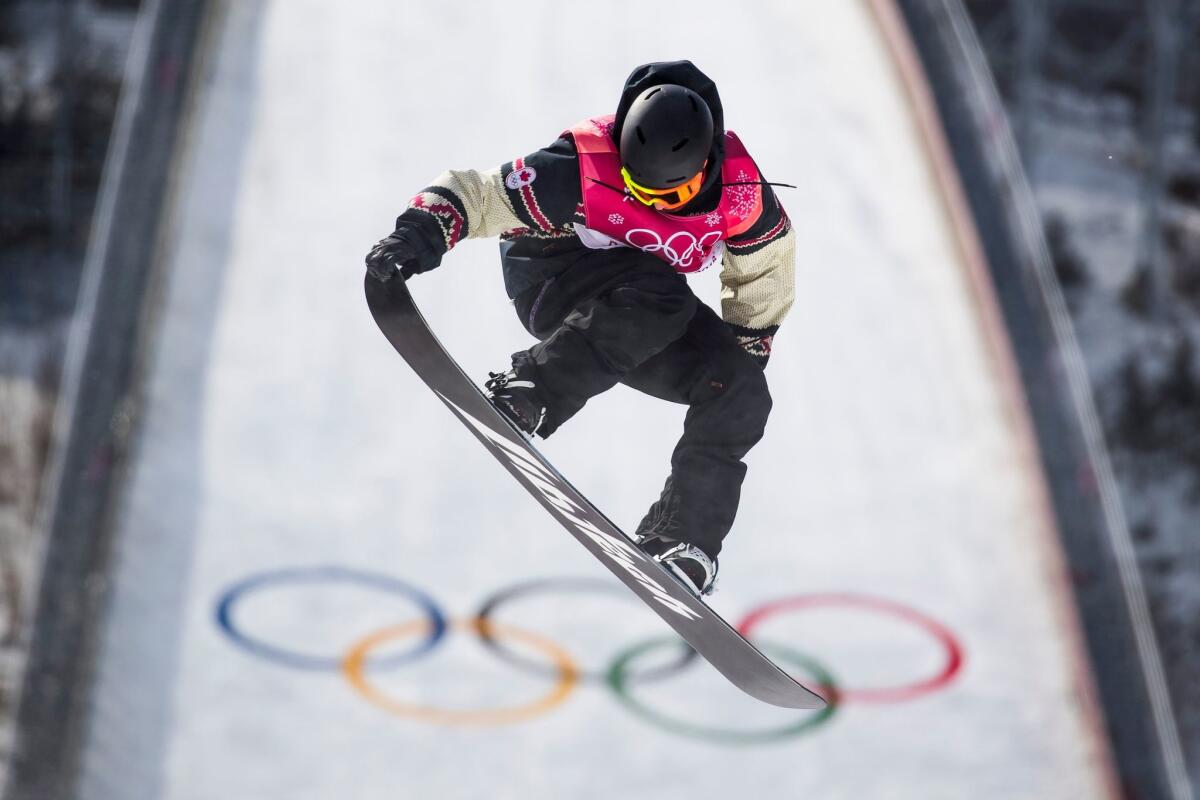
Follow @LAtimesWharton on Twitter
Produced by Sean Greene
Go beyond the scoreboard
Get the latest on L.A.'s teams in the daily Sports Report newsletter.
You may occasionally receive promotional content from the Los Angeles Times.




